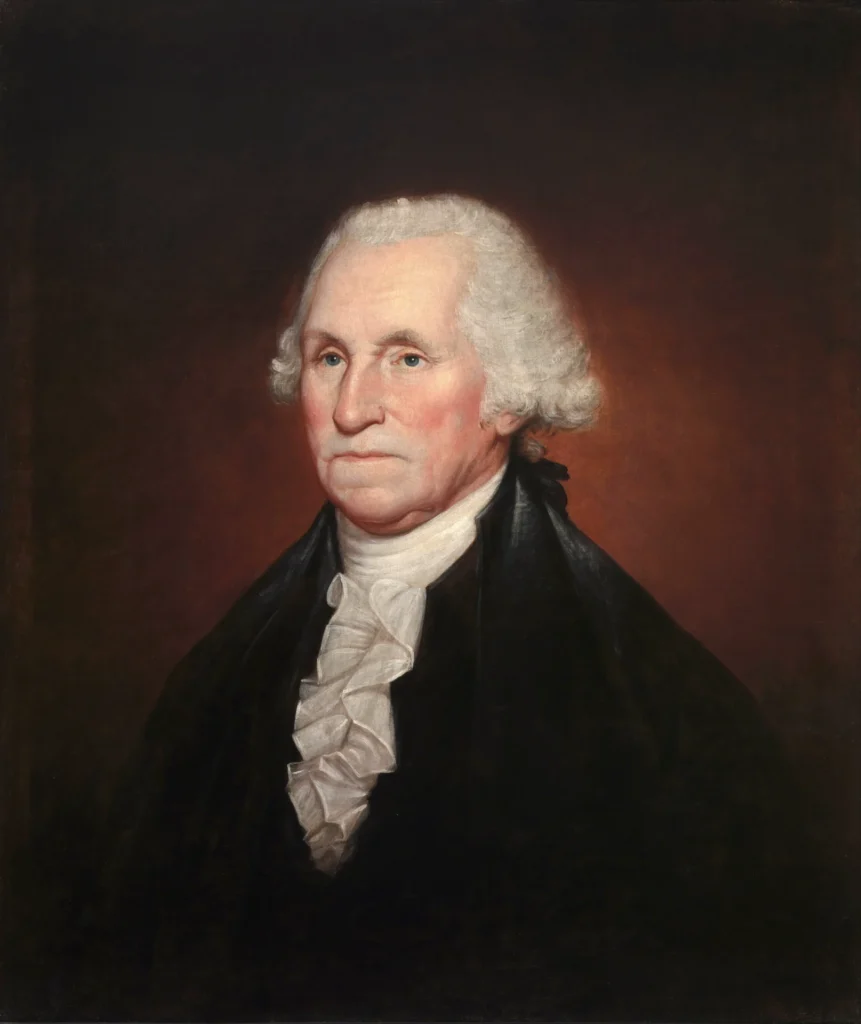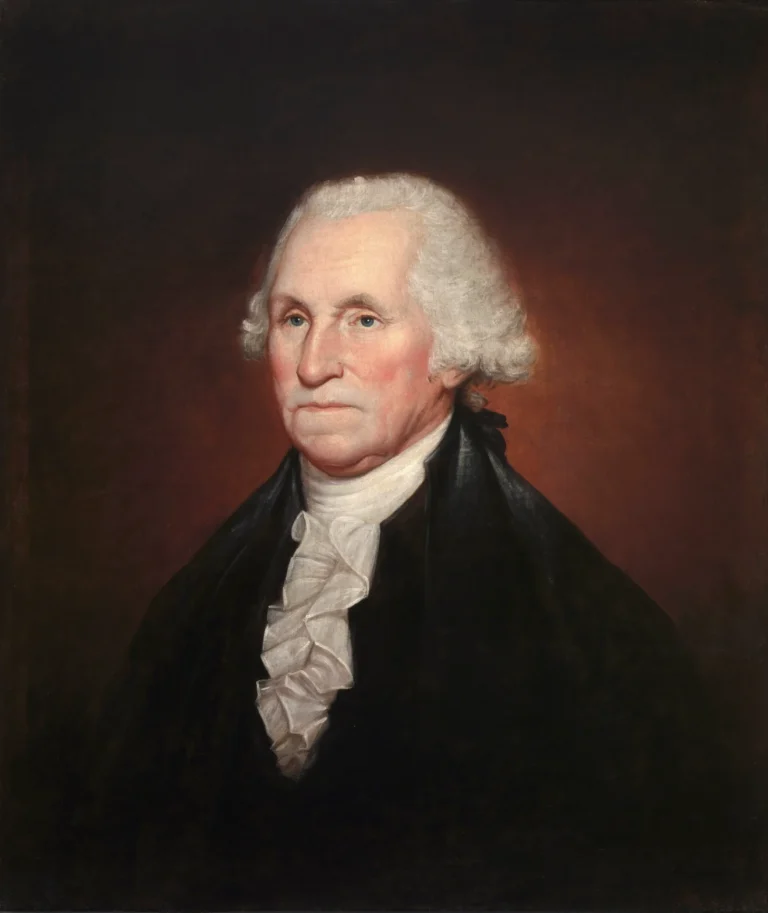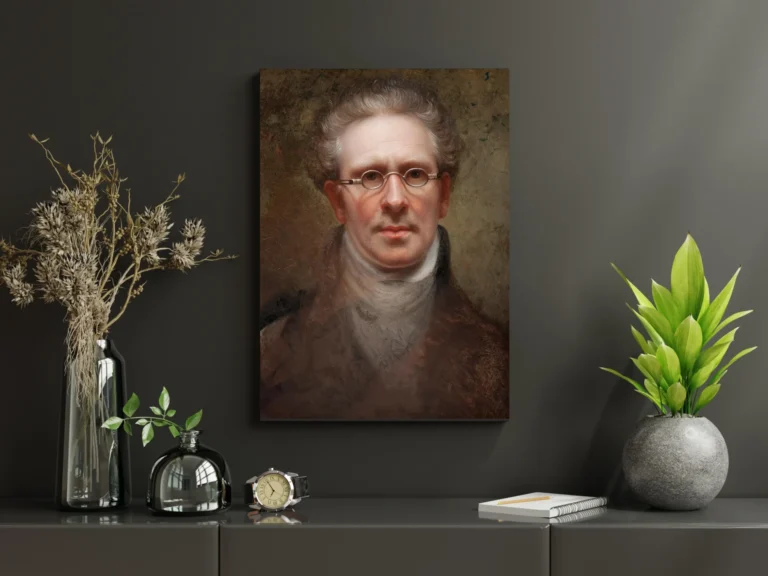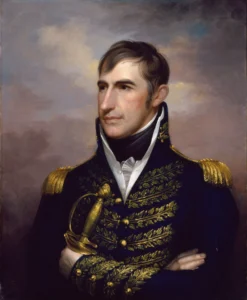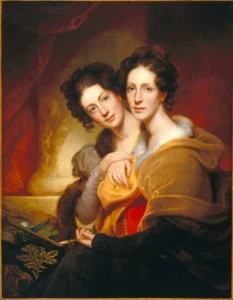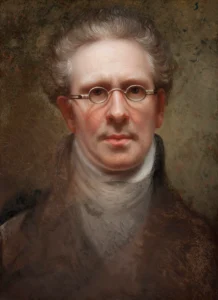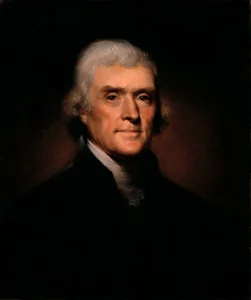George Washington
Rembrandt Peale, a prominent American artist and son of Charles Willson Peale, created numerous portraits of George Washington, most famously known as the 'Porthole' portraits. These artworks, produced from 1823 to 1850, encapsulate the ideals of leadership through an illusionary stone arch framing a bust of Washington. Rich in symbolism, they emphasize qualities such as faith and virtue, showcasing Peale's mastery in Neoclassical techniques. His extensive output of 79 versions highlights both his dedication to the subject and the public's fascination with Washington as an American icon.
1823 - 1850
About the Artwork
Did You Know
Liked what you see? Add it to your collection.
Enjoyed reading? Share it.
... continued
The "Porthole" Portraits
One of the most famous series of portraits by Rembrandt Peale is known as the "Porthole" portraits, characterized by a bust pose of Washington framed by an illusionary stone arch. This style was devised around 1823-1824, more than two decades after Washington's death. These portraits feature allegorical elements such as an oak leaf border symbolizing faith, virtue, and endurance, and the keystone mask of Jupiter above the arch, highlighting Washington's leadership and the classical ideals of the nation.
Multiple Versions
Rembrandt Peale painted at least 79 versions of these portraits over a period of 40 years, starting from 1824. These works were highly sought after by wealthy patrons and government institutions, contributing to Peale's steady income. The portraits were designed to convey the heroic and inspirational qualities of Washington, rather than just a representational likeness.
Inspiration and Technique
Peale's inspiration for these portraits came from various sources, including his father's works and the bust portrait by Jean-Antoine Houdon. He aimed to create an image of Washington that was both an icon and a likeness, capturing the grandeur and determination of the first president. Peale's skill in emulating French Neoclassical painting styles, which he learned during his time studying with Benjamin West in London, was instrumental in his success.
Specific Works
- "George Washington, Patriae Pater" (ca. 1824): This is one of the most notable "Porthole" portraits, featuring Washington in a black cloak with an illusionary stone arch and allegorical symbols. It is part of the collection at the Pennsylvania Academy of the Fine Arts.
- George Washington (c. 1845): This portrait, housed at the Saint Louis Art Museum, depicts Washington in military dress, gazing resolutely into the distance. It is another example of Peale's work in this period.
- "George Washington, the Standard National Likeness" (c. 1850): A smaller, simpler version of the "Patriae Pater" portrait, designed for modest spaces and private homes. It is part of the Philadelphia Museum of Art collection.
Legacy
Rembrandt Peale's portraits of George Washington have become standard representations of the first president and are celebrated for their inspirational and lifelike qualities. The original "Porthole" portrait sold to Congress in 1832 for $2,000 and is still displayed in the old Senate Chamber of the United States Capitol.




